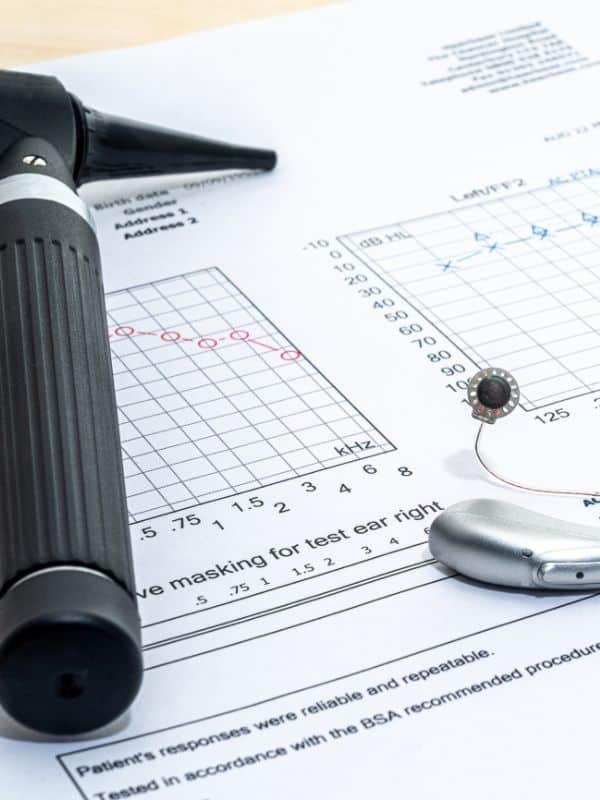If you’ve been referred for a diagnostic audiologic evaluation, it means your hearing requires a closer examination. This evaluation is typically recommended for individuals who did not pass an initial hearing screening.
The purpose of the evaluation is to determine if hearing loss is present. If so, it identifies the type, degree, and potential cause of the hearing loss. The results also guide the audiologist in developing personalized treatment recommendations or, when necessary, referrals to other healthcare professionals.
The specific tests conducted during a diagnostic evaluation depend on factors such as your age, symptoms, and medical history. These tests help determine:
The audiologist will assess whether the hearing loss is conductive (related to issues in the outer or middle ear) or sensorineural (stemming from the inner ear or auditory nerve).
At a minimum, a diagnostic audiologic evaluation includes the following tests:
These tests provide a comprehensive understanding of your hearing health, laying the foundation for effective treatment and improved communication.
Pure-Tone and Bone Conduction Testing
Pure-tone testing identifies the softest sounds a person can hear across a range of frequencies, from low to high. Bone conduction testing works similarly but uses a specialized headset to provide additional insights. This test helps the audiologist determine whether the hearing loss is conductive (originating in the outer or middle ear) or sensorineural (involving the inner ear or auditory nerve).
Speech Testing
Speech reception threshold (SRT) testing verifies the results of the pure-tone test. It measures the lowest sound level at which a person can clearly recognize and repeat spoken words, providing insight into speech clarity and understanding.
Additional Tests
The audiologist may include other assessments such as:
Specialized Testing
For infants, young children, or individuals with developmental or cognitive challenges, specialized tests are available. These methods allow the audiologist to assess the auditory system even when the patient cannot actively participate in the evaluation. These tailored approaches ensure accurate diagnosis and effective treatment planning for all ages and abilities.


When hearing loss is suspected in a child, a diagnostic hearing evaluation is crucial. This evaluation is the first step in identifying any hearing challenges and developing a treatment plan to support the child’s academic performance and social development.
During the evaluation, you can expect time to review the results with the audiologist. They will explain the findings, answer any questions, provide referrals if necessary, and begin planning appropriate treatment if needed.
Visual Reinforcement Audiometry (VRA) and Conditioned Play Audiometry (CPA) are commonly used techniques for assessing hearing in young children:
Audiologists are experts in hearing health and rehabilitation. Don’t hesitate to ask your audiologist for clarification or additional information if you have any concerns or questions. They are there to guide you and your child every step of the way.
A diagnostic hearing evaluation typically lasts about 30 to 40 minutes. Plan additional time for a discussion with the audiologist to review your test results, ask questions, and, if necessary, explore hearing aid options.
Bring a Supportive Companion
It’s recommended to bring a family member or close friend to your appointment. Hearing loss often affects the entire family, and having someone with you can provide support, help interpret the information shared, and assist in making informed decisions about your care.
Preparing for Your Appointment
Before the evaluation begins, you’ll complete a detailed medical history form. The audiologist will also discuss any specific concerns you have, including:
Be sure to bring a complete list of medications and supplements you are taking, as these can sometimes impact hearing health.
During the Appointment
The audiologist will perform a series of tests to assess your hearing and determine if there is any loss, its type, and its severity. After the evaluation, they will thoroughly explain the results, answer any questions, and discuss potential next steps, such as treatment or hearing aid options if needed.
Building a Partnership
A diagnostic hearing evaluation is not just about testing—it’s an opportunity to establish a trusting relationship with your audiologist. Don’t hesitate to ask questions or request clarification. Understanding your hearing health is essential for actively participating in the process of finding solutions that best fit your needs and lifestyle.